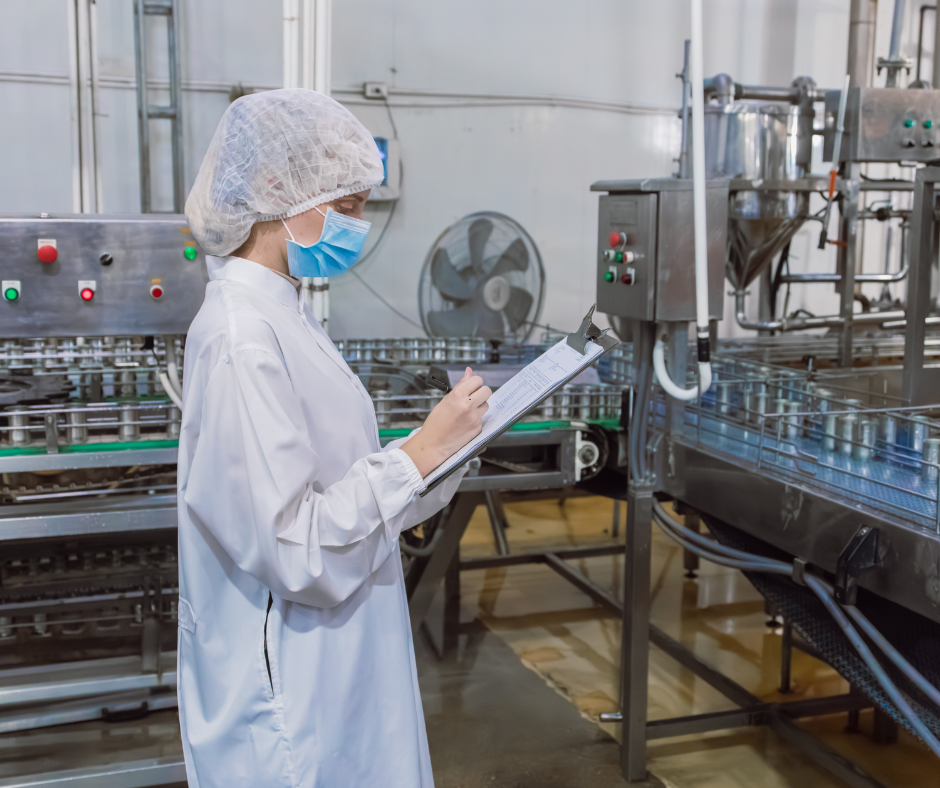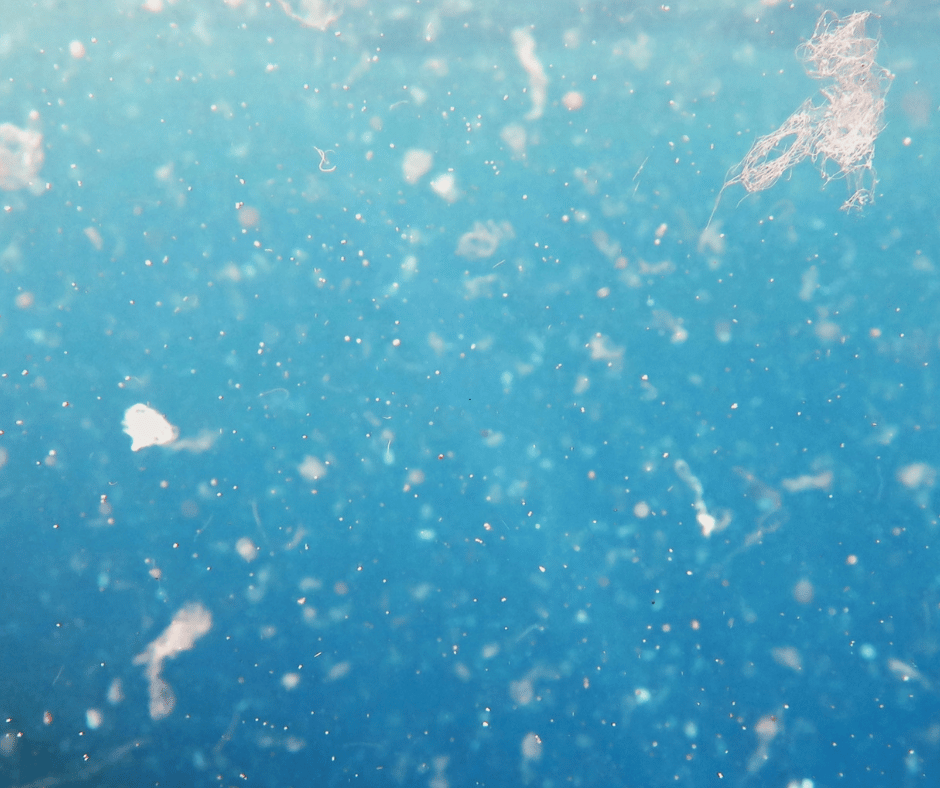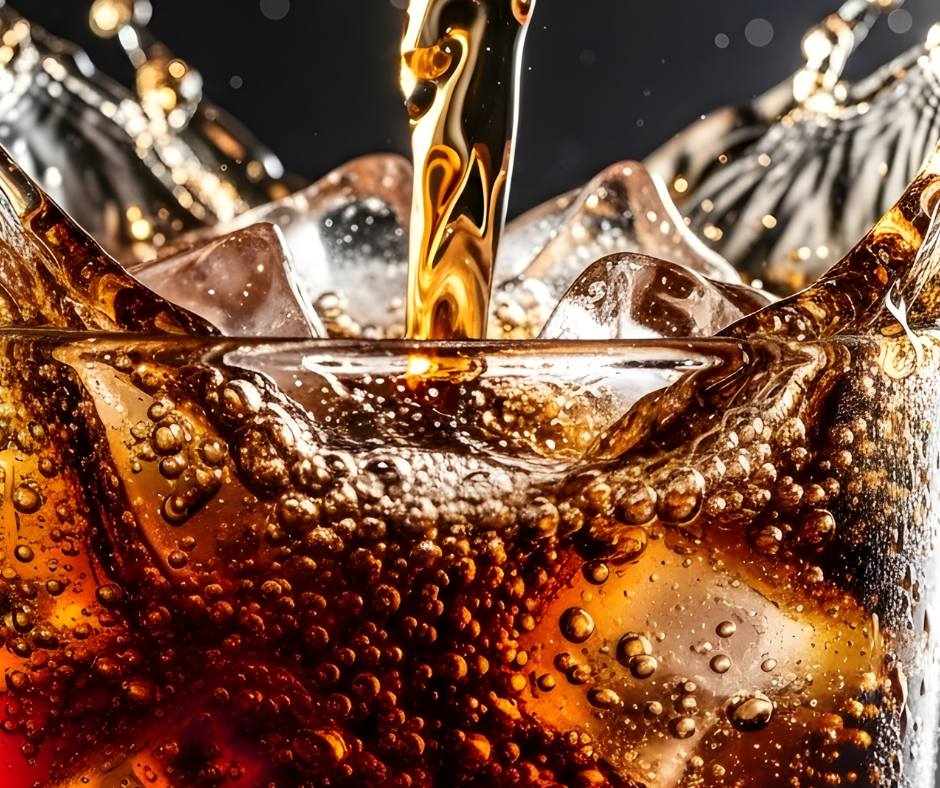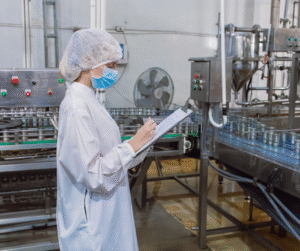There’s something deeply satisfying about watching a perfectly poured pint settle in the glass. The crisp cascade. The creamy head. That first refreshing sip. But behind every great pint is a finely tuned system—one that’s often overlooked by those enjoying the result.
So, how does that beer travel from the keg tucked away in the cellar to the tap on the bar? And what ensures it tastes as fresh and balanced as the brewer intended?
In this guide, we’ll take you behind the scenes of draught beer systems. You’ll learn what makes them work, why each component matters, and how gas quality—especially filtered CO₂—plays a bigger role than most realise. If you manage a bar, run a brewery, or are responsible for beer quality in any venue, this breakdown will help you pour consistently better pints with less waste and more confidence.
What Is Draught Beer and How Is It Different?
Draught beer is served directly from a keg rather than from a bottle or can. It’s the preferred choice in most pubs, bars, and taprooms for one key reason: freshness.
Unlike packaged beer, which often undergoes pasteurisation and longer storage, draught beer is usually kept at a controlled temperature and served quickly after kegging. This gives venues better control over carbonation, head retention, and pour quality. Done right, it offers customers a noticeably smoother, fresher pint.
But this freshness depends on more than just the beer itself. A draught beer system uses pressurised gas—usually CO₂ or a CO₂/nitrogen blend—to push beer from the keg to the tap. Without stable pressure and gas purity, carbonation suffers, foam collapses, and off-flavours can appear.
That’s why understanding how draught systems work—and what affects them—is key to delivering the perfect pint every time.
What Is Draught Beer and How Is It Different?
Draught beer—sometimes spelled “draft”—is beer served directly from a keg rather than from a bottle or can. It’s the preferred choice in most pubs, bars, and taprooms for one key reason: freshness.
Unlike packaged beer, which often undergoes pasteurisation and longer storage, draught beer is usually kept at a controlled temperature and served quickly after kegging. This gives venues better control over carbonation, head retention, and pour quality. Done right, it offers customers a noticeably smoother, fresher pint.
But this freshness depends on more than just the beer itself. A draught beer system uses pressurised gas (usually CO₂ or a CO₂/nitrogen blend) to push beer from the keg to the tap. Without stable pressure and gas purity, carbonation suffers, foam collapses, and off-flavours can appear.
That’s why understanding how draught systems work—and what affects them—is key to delivering the perfect pint every time.
The Main Components of a Draught Beer System
To pour a consistent, high-quality pint, each part of your draught system must work together seamlessly. From keg to tap, every component plays a role in beer quality, freshness, and foam stability. Below is a breakdown of the essential parts and how they function—plus where Sure Purity comes in.
Keg
The journey starts with the keg, which holds the beer under pressure. Beers can be pasteurised (typically more shelf-stable) or unpasteurised (which offer a fresher taste but shorter lifespan). Unfiltered or live beers, like cask ales, require even more careful handling. The keg must remain sealed and pressurised to keep oxygen out and preserve the beer’s quality.
Keg Coupler
This device connects the keg to both the gas and beer lines. Different keg types require different couplers (e.g. Sankey, A-type). A tight seal here is essential to maintain pressure and avoid gas leaks, which can cause flat or foamy beer. Choosing the right coupler ensures a consistent flow and carbonation level.
CO₂ Cylinder and Regulator
Gas enters the system here, supplying the pressure that pushes the beer toward the tap. The regulator controls how much pressure is applied, usually measured in PSI or bar. Consistent, clean pressure is vital—not only to keep the beer carbonated but also to avoid spoilage and off-tastes.
This is where Sure Purity plays a crucial role.
Unfiltered gas can introduce harmful contaminants such as benzene, sulphur compounds, or oil residue. These taints can damage flavour and head retention. Sure Purity’s Carboguard filtration systems remove these impurities at the point of dispense—ensuring that only food-grade CO₂ touches your beer. The result? Cleaner gas, better taste, and fewer complaints at the bar.
Beer Lines
Beer travels from the keg to the tap via insulated lines. These lines must be kept clean and at a stable temperature. Long-draw systems often run through chilled glycol loops to prevent warming and foaming. Dirty or poorly maintained lines can introduce bacteria or mould, drastically reducing the beer’s shelf life and flavour.
Faucet/Tap
Finally, the faucet dispenses the beer into the glass. The type of faucet—standard, flow-control, or stout-style—affects the pour rate and head formation. If the flow is too fast or slow, it can lead to excessive foam or flat beer. A clean, well-calibrated tap ensures a smooth finish and visual appeal in every pint.
How the System Works – Step by Step
Pouring the perfect pint may seem effortless from the bar side, but each pour is the result of a carefully controlled sequence. From gas pressure to temperature and line maintenance, every stage in the draught system must function precisely to deliver beer that’s fresh, flavourful, and consistent.
1. CO₂ Enters via the Regulator and Pressurises the Keg
A CO₂ cylinder supplies pressure to drive beer from the keg to the tap. The regulator is essential—it controls the pressure applied to the keg, maintaining carbonation and preventing oxidation.
Key functions of the regulator:
- Keeps beer properly carbonated during storage and service
- Stops air ingress, which causes spoilage and flat beer
- Balances the system to avoid over-foaming or under-pouring
Typical PSI Settings (can vary by system):
- Lagers: 12–14 PSI
- Ales/Stouts: 10–12 PSI
- Nitrogen-mixed systems (e.g. Guinness): often require a separate blend gas and higher pressure
Sure Purity’s Role:
Filtered CO₂ is critical here. Poor-quality gas can taint flavour before the beer even leaves the keg. Sure Purity’s Carboguard filters ensure the gas entering your keg is food-grade, contaminant-free, and compliant with ISBT/EIGA standards.
2. Beer Is Pushed Up the Beer Line
Once the keg is pressurised, the gas forces beer up through the beer line—a tube running from the keg coupler to the tap.
Factors affecting flow and quality:
- Line length and diameter: Too long or narrow causes resistance, leading to excess foam
- Material type: PVC, polyethylene, or barrier tubing can impact flavour retention and hygiene
- Cleanliness: Dirty lines lead to off-flavours, hazy appearance, and bacterial growth
Clean lines at least every 1–2 weeks to prevent biofilm build-up.
3. It Flows Through Cooled Lines (If Using a Long-Draw System)
For bars where kegs are stored in a remote cellar, beer must travel further—sometimes 10–30 metres. In these setups, a long-draw system is required.
How it works:
- Beer lines are enclosed within a trunk line surrounded by coolant (glycol or chilled water)
- Maintains consistent beer temperature from keg to tap (ideal: 3–5°C)
- Reduces foam caused by temperature spikes during transit
Warm lines lead to CO₂ breakout, creating foam and flat-tasting beer on dispense.
4. Beer Exits Through the Faucet into the Glass
At the tap, beer reaches the final stage of its journey. The faucet—also called the beer tap or dispense valve—controls flow rate and presentation.
Key design features:
- Flow control valves: Let staff fine-tune speed and head retention
- Material: Stainless steel or chrome-plated brass resists corrosion and maintains taste
- Design shape: Can influence how beer hits the glass and affects foam generation
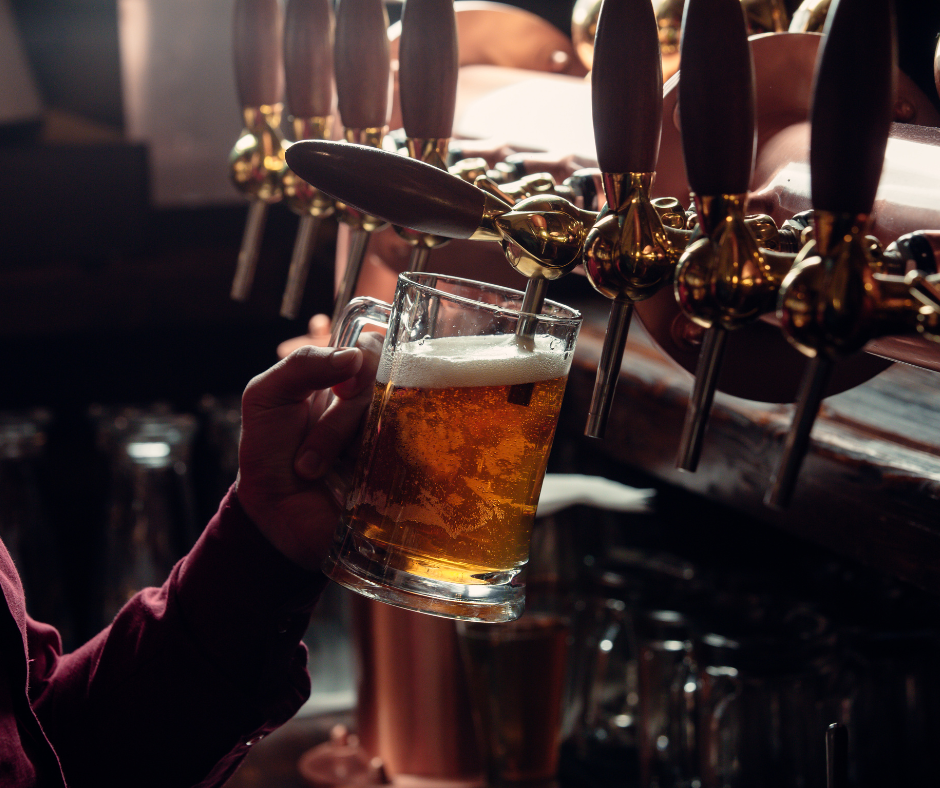
Open the tap fully when pouring. Partial openings create turbulence and unwanted foam.
Why CO₂ Quality Is Key to Great Draught Beer
It’s easy to assume CO₂ is just a delivery tool. But in draught systems, it does more than move beer from keg to tap—it preserves taste, controls foam, and protects freshness. If the gas isn’t clean, the consequences show up fast at the bar.
Contaminated CO₂ Can Ruin Flavour and Foam
Many venues unknowingly use CO₂ that doesn’t meet food-grade standards. Impurities like sulphur, benzene, or even oil residue can seep into the beer, altering its taste and aroma.
Real-world example:
A craft bar in Bristol noticed inconsistent flavour across taps—sometimes a sharp, acidic tang or a flat mouthfeel. The beer itself was fine. After inspection, the issue was traced back to the CO₂ cylinder. It contained trace sulphur compounds—enough to spoil premium beer with each pour.
Symptoms of poor gas quality:
- Metallic or sulphurous taste
- Poor head retention
- Flat or foamy pours
- Shortened shelf life in the keg
- Complaints from regulars noticing “something’s off”
Gas Purity Affects Both Freshness and Reputation
Most brewers put enormous care into crafting their beer. But if poor-quality CO₂ is used at the dispense stage, that care is undone in seconds.
Unfiltered CO₂ problems:
- Introduces contaminants from gas suppliers or delivery systems
- Can corrode regulators and affect PSI consistency
- Contributes to foam instability and off-gassing (beer losing fizz before it reaches the glass)
Why Standards Matter: ISBT & EIGA Compliance
The International Society of Beverage Technologists (ISBT) and European Industrial Gases Association (EIGA) outline strict standards for CO₂ purity in beverage service. But not all filtration or gas supply setups meet these benchmarks—especially in older or budget systems.
Sure Purity’s Solution: High-Efficiency Gas Filtration
Sure Purity’s Carboguard filters offer a zero-waste, low-maintenance solution for maintaining consistent gas quality at the point of dispense.
Carboguard (Standard Model)
Perfect for busy bars and high-throughput restaurants.
- Lasts 12+ months under typical conditions
- Removes oils, sulphur, benzene and other contaminants
- Supports better head retention and taste stability
- Reduces gas-related faults at the tap
Carboguard Mini
Designed for smaller venues or mobile bar setups.
- Compact and effective
- Ideal for microbreweries, pop-ups, and events
- Same protection in a space-saving form
Parker DH Alternative
Sure Purity’s systems provide an effective, zero-waste replacement for bulkier Parker DH filters—no waste media to dispose of, no complex installation, and longer service intervals.
Example Scenario:
A gastropub in Manchester serving premium German lagers struggled with inconsistent foam and guest complaints. By switching to Carboguard, their pours became more stable, and their keg turnover improved due to longer-lasting beer and fewer waste pulls.
Why CO₂ Quality Is Key to Great Draught Beer
It’s easy to assume CO₂ is just a delivery tool. But in draught systems, it does more than move beer from keg to tap—it preserves taste, controls foam, and protects freshness. If the gas isn’t clean, the consequences show up fast at the bar.
Contaminated CO₂ Can Ruin Flavour and Foam
Many venues unknowingly use CO₂ that doesn’t meet food-grade standards. Impurities like sulphur, benzene, or even oil residue can seep into the beer, altering its taste and aroma.
Real-world example:
A craft bar in Bristol noticed inconsistent flavour across taps—sometimes a sharp, acidic tang or a flat mouthfeel. The beer itself was fine. After inspection, the issue was traced back to the CO₂ cylinder. It contained trace sulphur compounds—enough to spoil premium beer with each pour.
Symptoms of poor gas quality:
- Metallic or sulphurous taste
- Poor head retention
- Flat or foamy pours
- Shortened shelf life in the keg
- Complaints from regulars noticing “something’s off”
Gas Purity Affects Both Freshness and Reputation
Most brewers put enormous care into crafting their beer. But if poor-quality CO₂ is used at the dispense stage, that care is undone in seconds.
Unfiltered CO₂ problems:
- Introduces contaminants from gas suppliers or delivery systems
- Can corrode regulators and affect PSI consistency
- Contributes to foam instability and off-gassing (beer losing fizz before it reaches the glass)
Why Standards Matter: ISBT & EIGA Compliance
The International Society of Beverage Technologists (ISBT) and European Industrial Gases Association (EIGA) outline strict standards for CO₂ purity in beverage service. But not all filtration or gas supply setups meet these benchmarks—especially in older or budget systems.
Sure Purity’s Solution: High-Efficiency Gas Filtration
Sure Purity’s Carboguard filters offer a zero-waste, low-maintenance solution for maintaining consistent gas quality at the point of dispense.
Carboguard (Standard Model)
Perfect for busy bars and high-throughput restaurants.
- Lasts 12+ months under typical conditions
- Removes oils, sulphur, benzene and other contaminants
- Supports better head retention and taste stability
- Reduces gas-related faults at the tap
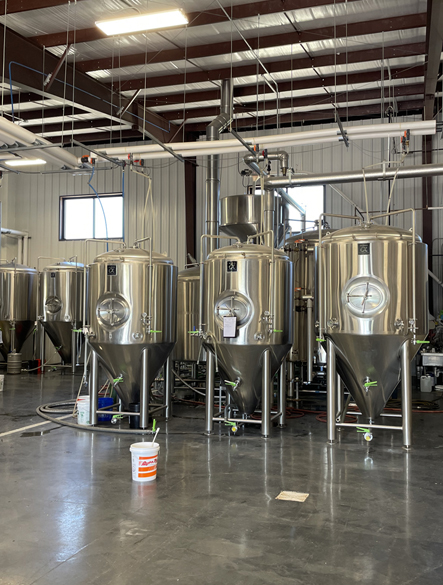
Carboguard Mini
Designed for smaller venues or mobile bar setups.
- Compact and effective
- Ideal for microbreweries, pop-ups, and events
- Same protection in a space-saving form
Parker DH Alternative
Sure Purity’s systems provide an effective, zero-waste replacement for bulkier Parker DH filters—no waste media to dispose of, no complex installation, and longer service intervals.
Example Scenario:
A gastropub in Manchester serving premium German lagers struggled with inconsistent foam and guest complaints. By switching to Carboguard, their pours became more stable, and their keg turnover improved due to longer-lasting beer and fewer waste pulls.
Common Draught Beer Problems – And What Causes Them
Even the best systems run into issues. If your pours aren’t consistent, one of the following problems might be the cause. Here’s what to look for—and how to fix it.
1. Foamy Beer
Too much pressure in the system can over-carbonate the beer. Dirty or warm beer lines also cause excess foaming.
Common causes:
- Regulator PSI set too high
- Beer lines not chilled properly
- Bacterial build-up or soap residue in lines
Fix it:
Check your PSI settings (aim for 12–14 PSI for lagers, 10–12 PSI for ales). Clean lines every 1–2 weeks. Ensure glycol systems are working if you’re using a long-draw setup.
2. Flat Beer
Your beer looks lifeless and tastes dull. This usually means there’s not enough CO₂ pressure—or there’s a leak somewhere.
Common causes:
- PSI too low
- Gas leaks around keg coupler or regulator
- Poor seal in the keg connection
Fix it:
Inspect for audible leaks at the gas connection points. Recheck your regulator settings and confirm you’re using clean, food-grade CO₂ to avoid rapid CO₂ absorption loss. This will fix your flat beer problems.
3. Off-Tasting Beer
Beer tastes metallic, buttery, sour, or sulphurous. If the beer itself is sound, the issue likely lies in the dispense system.
Common causes:
- Contaminated gas supply (e.g. sulphur, benzene)
- Dirty beer lines or faucets
- Long-standing, untapped kegs
Fix it:
Swap out old gas filters—preferably with a Carboguard system from Sure Purity to prevent tainted gas from entering the keg. Clean lines thoroughly and flush the system before reconnecting fresh beer.
4. Inconsistent Flow or Sputtering
The beer doesn’t pour smoothly, or you get bursts of foam and air. Not only does this waste beer, it ruins the customer experience.
Common causes:
- Empty gas cylinder or partially tapped keg
- Faulty keg coupler
- Trapped air in lines or loose fittings
Fix it:
Check your keg and cylinder levels. Replace worn keg seals or couplers. Bleed any trapped air out of the lines before resuming service.
5. Cloudy or Hazy Appearance (When It Shouldn’t Be)
If your lager or filtered ale is pouring hazy without reason, you may have a hygiene or temperature issue.
Common causes:
- Dirty beer lines
- Unstable temperatures during dispense
- Contaminants from low-quality gas
Fix it:
Review your line cleaning records. Check cellar and trunk line temperatures. Fit a gas filter to block impurities from entering at the source.
Keeping Your Draught System Clean and Efficient
A great pint isn’t just about the beer—it’s about the system behind it. Clean, consistent, and well-maintained equipment keeps flavour fresh, waste low, and customers happy. Here’s how to stay on top of your draught setup.
Clean Your Beer Lines Regularly
Dirty lines are one of the most common reasons beer tastes off.
- Clean every 1–2 weeks using approved cleaning solutions
- Remove yeast, bacteria, and biofilm build-up
- Poor hygiene affects taste, foam, and customer trust
Store CO₂ Cylinders Safely
Where and how you store gas matters.
- Keep cylinders upright and secured
- Store in cool, ventilated areas, away from direct sunlight
- Check for leaks and signs of wear weekly
Monitor Pressure Settings
Correct PSI keeps beer flowing with the right carbonation and foam.
- Lagers: 12–14 PSI
- Ales/Stouts: 10–12 PSI
- Adjust for temperature, elevation, and system design
- Check weekly to avoid foamy or flat pours
Use High-Quality Gas Filters
Gas purity affects taste more than you might think.
- Replace filters every 12 months
- Prevent sulphur, hydrocarbons, and odours from entering the beer
- Our Carboguard filters meet ISBT/EIGA standards
- Carboguard Mini offers a compact solution for smaller venues or mobile bars
Choose a Sustainable Alternative
Traditional filters can create unnecessary waste.
- Sure Purity filters reduce solid waste by up to 50%
- Fewer replacements mean lower costs and a smaller carbon footprint
- Ideal for venues looking to boost sustainability
Train Your Team
Your staff are your first line of defence.
- Teach keg handling and tapping techniques
- Show how to spot pressure issues and taste faults
- Create a checklist to ensure consistency in cellar management
Final Thoughts
Serving the perfect pint isn’t just about great beer. It’s about having the right draught setup in place—and keeping it clean, consistent, and well-regulated. From gas purity to pressure settings, every component plays a part in protecting flavour, head retention, and customer experience.
Poor-quality CO₂, dirty beer lines, and overlooked pressure issues can ruin a pint before it even reaches the tap. That’s why smart hospitality teams invest in reliable, long-lasting solutions like Sure Purity’s Carboguard filtration range. By eliminating harmful impurities and cutting down on waste, these filters support both the taste in the glass and your business’s bottom line.
Key Takeaways
- Gas quality matters – Poor CO₂ introduces off-flavours and shortens beer life.
- The full draught system must be maintained – From keg to faucet, cleanliness and calibration are vital.
- Pressure settings must match the beer type – Lagers and ales require different PSI levels.
- Filtered gas improves sustainability – Sure Purity filters reduce waste by up to 50%.
- Training and routine checks protect quality – A well-informed team prevents costly spoilage.
Whether you’re running a busy pub, a craft brewery, or managing procurement for a hospitality chain, it’s worth stepping back and asking: is your current system protecting your beer—or compromising it? A solution like our Parker DH Alternative or carboguard mini could help.
If you’re unsure, it might be time to explore how Sure Purity’s zero-waste CO₂ filters can help you serve better beer, with less waste. Contact our team today.

